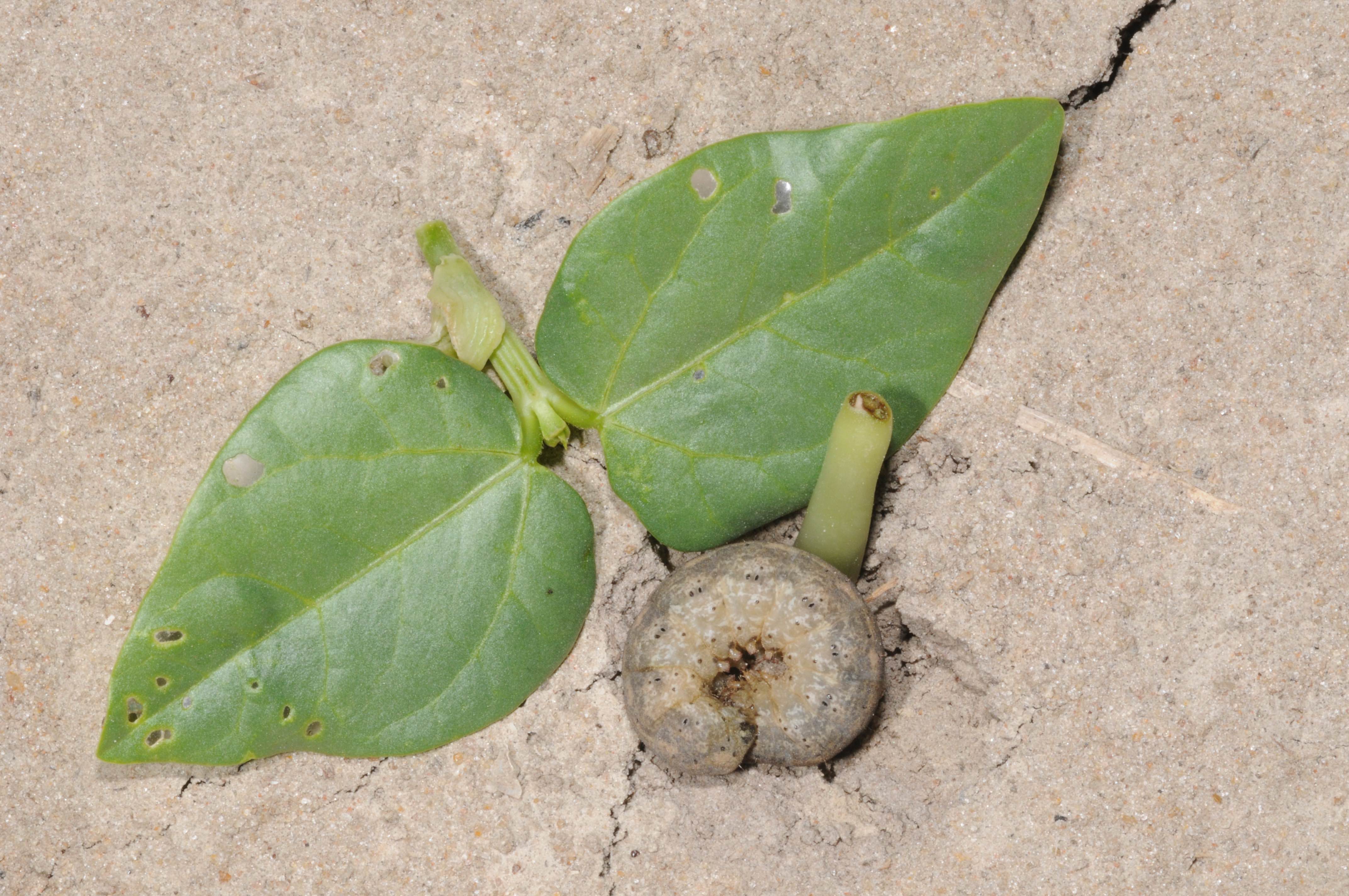Granulate Cutworm, Vol. 6, No. 5

Feltia subterranea
Order: Lepidoptera
Family: Noctuidae
Losing a few hills of pinkeye peas to cutworms is not really that big a deal, but having them destroy four of the seven tomato plants you just set out, plants you grew from seed because you can’t get that variety locally, is an entirely different matter.
It is obvious why they are called cutworms, but how do these large caterpillars come to be in your nicely tilled garden in the first place, and why didn’t you see them when setting out your transplants? There are several species of cutworms but granulate cutworm and black cutworm are two of the most common. Some species overwinter as partly grown larvae. Other species begin growing on winter weeds in late winter/early spring. When you till up the weeds to plant your garden, these partly-grown cutworms are left without anything to eat—until you set out your transplants. Cutworms will also damage other transplants, like peppers and eggplants, as well as plants such as peas, beans, okra and cucurbits that are usually grown from seed.
Larger cutworms usually feed nocturnally, remaining hidden beneath the soil during the day. Sometimes, large caterpillars will even drag part of a plant down into the soil with them so they can feed during the day while remaining hidden from predators. If you lose a plant to cutworms, you can often uncover the caterpillar that did the deed by using a knife or stick to carefully dig in the soil around the “stump.” By all means kill the thing, and it may be somewhat satisfying to do so, but this won’t save the plants they have already destroyed. Protecting newly set transplants from cutworms requires preventive control.
Control: The easiest way to protect young transplants from cutworms is to spray a six to eight-inch band of soil around each plant with an insecticide that contains bifenthrin or permethrin immediately after you have set the plants out and watered them. These pyrethroid insecticides are highly effective against cutworms. Organic gardeners can protect plants by placing “cutworm collars” or “cutworm fences,” made from wax paper or aluminum foil, around each plant when transplanting so that the collar extends about an inch into the soil and a couple of inches above the soil line. Cultural control can also be effective. Cutworms are rarely a problem in gardens or fields that have been tilled and kept weed-free for at least three weeks before planting. Of course, this goal can be difficult to achieve during wet, rainy springs, and the potential for cutworm damage is usually higher in such years.
See page 11 of Extension Publication 2347, Insect Pests of the Home Vegetable Garden,
http://extension.msstate.edu/sites/default/files/publications/publications/p2347.pdf for more information on cutworms and a list of recommended insecticides.
Blake Layton, Extension Entomology Specialist, Mississippi State University Extension Service.
The information given here is for educational purposes only. Always read and follow current label directions. Specific commercial products are mentioned as examples only and reference to specific products or trade names is made with the understanding that no discrimination is intended to other products that may also be suitable and appropriately labeled.
Mississippi State University is an equal opportunity institution.

